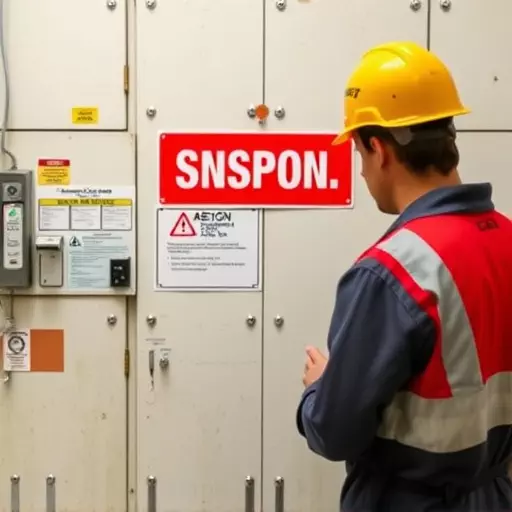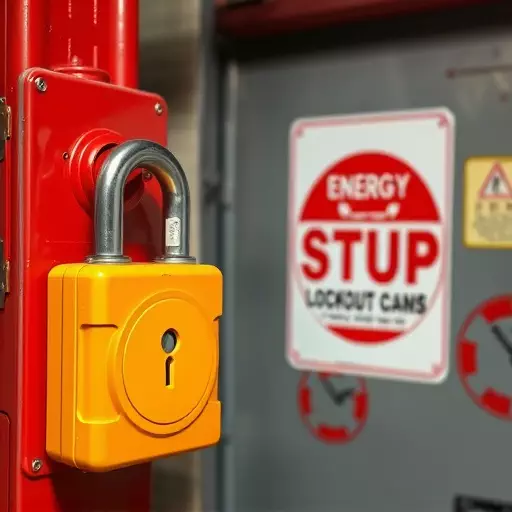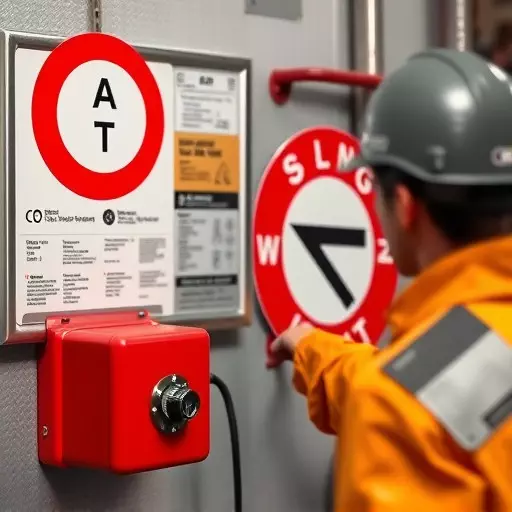Lockout/tagout (L/T/O) compliance training is crucial for workplace safety, especially in industries handling energy sources. OSHA's L/T/O standards guide employees on identifying hazards, applying locks and tags correctly, and fostering a culture of safety. Digital software solutions streamline this process, automating tasks like form generation and scheduling, while offering interactive training modules to enhance understanding and ensure consistent compliance with OSHA's lockout tagout standards. Embracing these technologies is vital for adhering to workplace safety protocols and reducing accidents in the digital era.
In today’s digital era, ensuring workplace safety through effective lockout/tagout practices is paramount. Understanding OSHA’s crucial role and its lockout/tagout standards is essential for every organization. This article delves into the significance of comprehensive training for energy control procedures, exploring how software solutions can revolutionize lockout tagout compliance. We’ll discuss digital tools that streamline processes, enhance safety, and foster a culture of diligent workplace safety practices.
- Understanding Lockout/Tagout: A Cornerstone of Workplace Safety
- OSHA's Role and the Lockout/Tagout Standards
- The Importance of Training for Energy Control Procedures
- Software Solutions: Streamlining Lockout/Tagout Compliance
- Implementing Digital Tools for Effective Lockout/Tagout Practices
Understanding Lockout/Tagout: A Cornerstone of Workplace Safety

Understanding Lockout/Tagout is an indispensable cornerstone in ensuring workplace safety and preventing accidents, especially when dealing with energy sources. This critical process involves de-energizing machinery or equipment before performing maintenance or repairs, thereby safeguarding workers from potential harm. Compliance with OSHA’s lockout/tagout standards is not just a regulatory requirement but a vital practice that fosters a culture of safety.
OSHA’s lockout/tagout standards outline specific procedures for controlling energy sources during maintenance, ensuring that equipment is properly secured and cannot be activated unexpectedly. Energy control procedures training equips employees with the knowledge to recognize potential hazards, correctly apply locks and tags, and understand their responsibilities in maintaining a safe working environment. By adhering to these protocols, organizations can mitigate risks, reduce incidents, and create a more secure atmosphere for all workers.
OSHA's Role and the Lockout/Tagout Standards

OSHA plays a pivotal role in ensuring workplace safety, particularly in industries where energy sources are involved. The agency has established comprehensive guidelines known as the Lockout/Tagout Standards to prevent accidents related to energy control procedures. These standards are designed to safeguard employees from unexpected startup or release of energy during maintenance or service activities.
The OSHA lockout tagout standards require employers to implement effective programs for controlling hazardous energy sources before any work is performed. This includes comprehensive training on lockout tagout compliance, which enables workers to understand their responsibilities in ensuring safe energy control practices. Through such training, employees learn how to de-energize equipment, apply locks and tags, and follow proper procedures to prevent accidents during maintenance tasks.
The Importance of Training for Energy Control Procedures

In today’s industrial landscape, ensuring safe energy control procedures is non-negotiable. Lockout/tagout (L/T/O) compliance training empowers employees to recognize and mitigate hazards associated with energized equipment, thereby preventing severe injuries or fatalities. OSHA’s lockout tagout standards serve as a critical framework, outlining essential steps for de-energizing, securing, and labeling equipment before maintenance or repair. By implementing thorough L/T/O training programs, organizations can foster a safety culture where every employee understands their role in protecting themselves and their colleagues from electrical risks.
Effective energy control procedures training goes beyond mere knowledge retention. It equips workers with practical skills to apply L/T/O protocols, such as using proper locking devices, following sequential tagging systems, and maintaining clear communication. This hands-on approach ensures that employees can confidently and consistently execute safe work practices, reducing the risk of accidents and enhancing overall workplace safety.
Software Solutions: Streamlining Lockout/Tagout Compliance

In today’s digital era, streamlining workplace safety processes is more crucial than ever. Lockout/Tagout (L/T) compliance training is no exception, and software solutions are revolutionizing how organizations manage this vital aspect of worker safety. These tools provide a structured approach to ensuring that energy control procedures are followed rigorously, aligning perfectly with OSHA’s lockout tagout standards.
By implementing dedicated lockout tagout software, companies can automate tasks such as generating and tracking L/T forms, scheduling training sessions, and conducting regular audits. This not only saves time but also ensures consistency in compliance. Moreover, digital platforms often include interactive modules for energy control procedures training, making it easier for workers to understand their responsibilities and stay updated on the latest safety protocols.
Implementing Digital Tools for Effective Lockout/Tagout Practices

In today’s digital age, embracing technology is essential for maintaining OSHA lockout/tagout standards and ensuring workplace safety. Lockout tagout compliance training has evolved beyond traditional methods, making way for innovative software solutions. These tools offer a modern approach to managing energy control procedures, streamlining processes, and enhancing overall safety protocols.
By implementing digital platforms, companies can automate various aspects of lockout/tagout practices. Software solutions provide centralized databases for tracking equipment and maintenance records, ensuring that all personnel have access to up-to-date information. Additionally, these tools offer interactive training modules, making it easier for employees to grasp complex energy control procedures and fostering a culture of safety consciousness.


